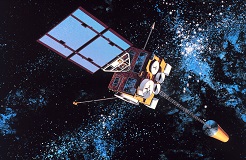Globalstar has launched a new product allowing consumers to turn their smartphones and tablets into a satellite device when outside of traditional mobile coverage areas.
Using an app and a Sat-Fi satellite hot spot, customers can use their own Wi-Fi enabled devices and existing phone numbers to send and receive calls, email & SMS over Globalstar’s satellite network.
The US-based company owns a “constellation” of Low Earth Orbiting (LEO) satellites that each consist of a communications system made up of both S and L-band antennas.
The satellites use a “bent-pipe” architecture that means, on any given call, several satellites transmit a caller’s signal via CDMA technology to a satellite dish at the appropriate gateway where the call is then routed locally through the terrestrial telecommunications system.
Globalstar, which estimates around two billion people live or work outside of terrestrial networks, said it is targeting retail, enterprise and government customers.
Jay Monroe, Chairman and CEO of Globalstar, commented: “It has been our vision to seamlessly integrate satellite and terrestrial coverage, and through many years of research and development, we are thrilled to announce this proprietary new technology and service offering in order to expand the use and appeal of our mobile satellite services to a much larger addressable market.
“Now that we have completed the deployment of our new constellation, Sat-Fi will have global appeal to those who need reliable connectivity beyond the cellular grid. As we continue to seamlessly integrate our satellite services into the everyday lives of our increasingly expanding subscriber base, this scalable technology represents a giant leap forward in achieving this fundamental goal.”
Sat-Fi is due to go on sale in the second quarter of the year.
Read more


